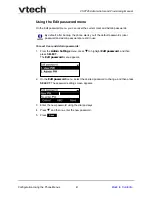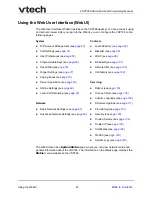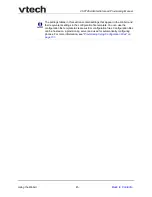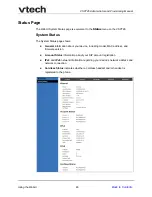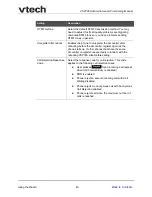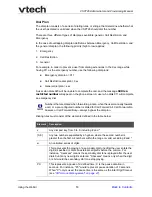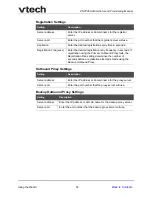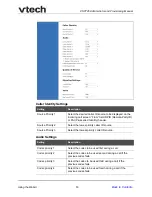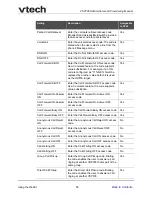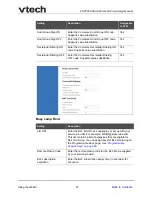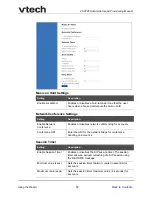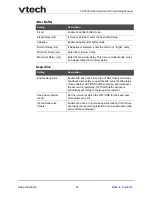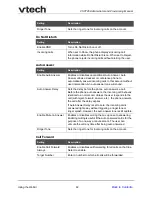
Using the WebUI
54
VSP726 Administrator and Provisioning Manual
Quality of Service
Signaling Settings
Select the codec to be used fifth during a call if the previous
codec fails.
Select the codec to be used sixth during a call if the
previous codec fails.
Select the codec to be used last during a call if the previous
codec fails.
Select to enable secure RTP for voice packets.
When G.729a/b is enabled, select to enable G.729
Annex B, with voice activity detection (VAD) and
bandwidth-conserving silence suppression.
Select the packeti
z
ation interval time.
DTMF Payload Type
Set the DTMF payload type for in-call DTMF from 96–127.
Setting
Description
Enter the Differentiated Services Code Point (DSCP) value
from the Quality of Service setting on your router or switch.
Enter the Differentiated Services Code Point (DSCP) value
from the Quality of Service setting on your router or switch.
Setting
Description
Enter the local SIP port.
Select the SIP transport protocol:
UDP (User Datagram Protocol) is generally less prone
to latency, but SIP data may be subject to network
congestion.
TCP (Transmission Control Protocol) is the most
reliable protocol and includes error checking and
delivery validation.
TLS (Transport Layer Security)—the VSP726 supports
secured SIP signalling via TLS. Optional server
authentication is supported via user-uploaded certificates.
TLS certificates are uploaded using the configuration file.
See
“file Module: Imported File Parameters” on
and consult your service provider.
Setting
Description


